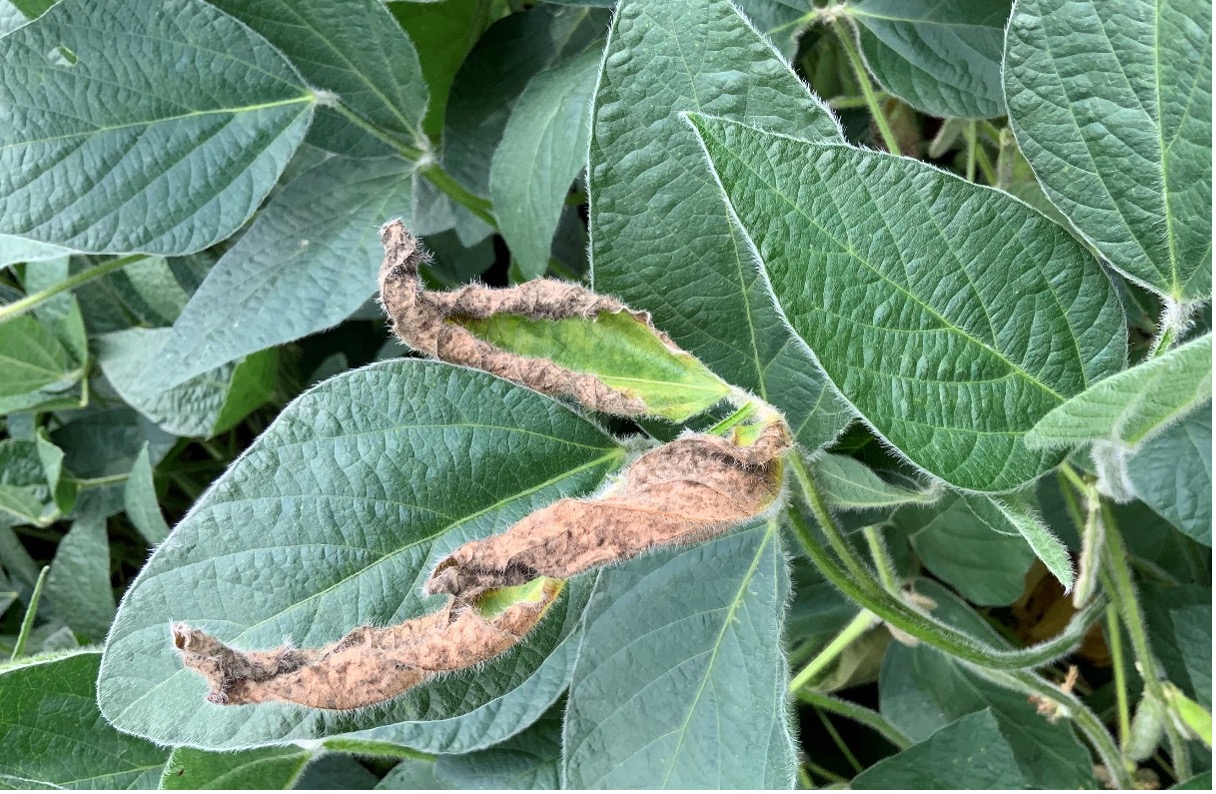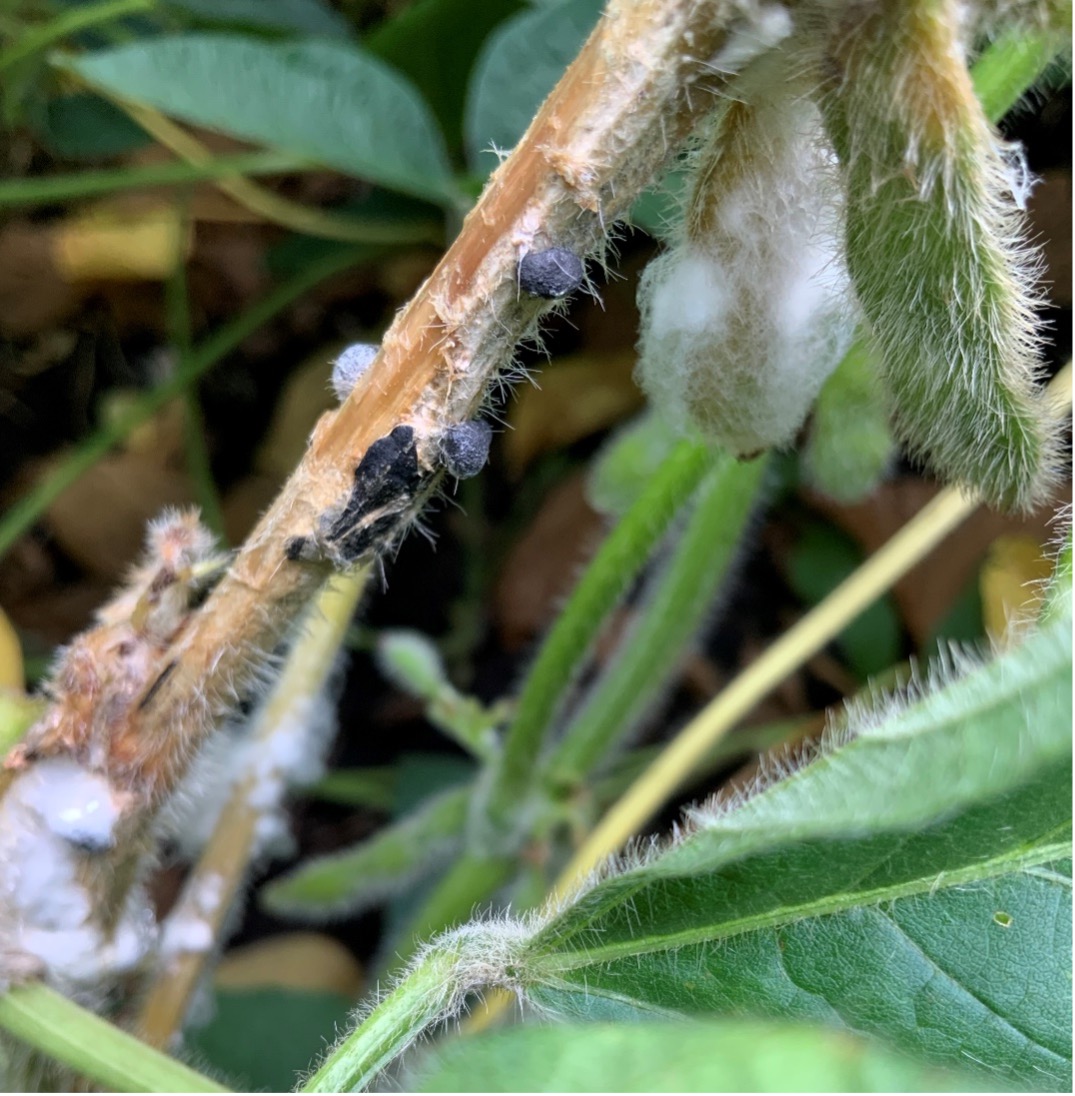As the growing season progresses and we near harvest, Illinois soybean growers often see increased disease symptomology in their fields. They may wonder what can be done to combat diseases once symptoms appear, but with some pathogens the infection occurs many weeks prior to the onset of visible signs of disease. Once the infection is apparent, it is often too late for effective control. The best-known illustration of this is Sudden Death Syndrome (SDS), but white mold is another example. Figure 1 shows very early symptoms of the disease appearing in the upper canopy. Although it may be too late to control white mold this year, understanding the disease can help with combatting it in the future.

Figure 1
White mold (Sclerotinia sclerotiorum) is a fungal disease of soybeans that is more problematic in cool, moist conditions and is often considered a high-yield disease due to its tendency to be a greater problem in fields with high yield potential. Since it thrives in cool, moist conditions bushy soybean varieties with robust growth are often at greater risk for infection. This is mainly due to their tendency to trap moisture within the canopy. The pathogen infects soybeans through flowers at the onset of flowering (R1 growth stage). As the disease progresses, a characteristic white mold can be found on the stems along with sclerotia, which are the survival structures of the fungus and source for infections in subsequent years (Figure 2). Sclerotia are very similar in appearance to rodent droppings.

Figure 2
Control measures
The best strategy for white mold management utilizes multiple facets. Crop rotation can be helpful, but the sclerotia can survive in the soil for several years so rotation is only one piece of a robust management plan. For rotation to be truly effective, two to three years of a non-host crop may be necessary. White mold can also infect many other species, including other beans, peas, sunflowers, or plants in the mustard family, such as canola. For this reason, when choosing a rotational crop be sure that it is not also susceptible to the disease.
Variety selection can also be a management tool, but not a silver bullet. There are currently no soybean varieties with complete resistance in the marketplace. Some varieties have a better ability to tolerate white mold, but that can be partially due to less robust growth and a lower overall yield potential. As noted earlier, white mold thrives in dense soybean canopies. For this reason, wider row spacings and lower plant populations can help keep the disease in check.
Finally, an R1 fungicide application can be valuable. This timing is critical due to the aforementioned fact that the disease enters the plant through new flowers. When choosing a fungicide, it is important to choose one that is labeled for white mold to ensure that it will be effective against the disease. Some growers in high risk areas will apply fungicide at three week intervals after R1 to continue to protect new flowers from infection.
White mold can be devastating to soybean yields in certain areas and years. The disease can strike fear in the hearts of growers in regions where the disease is a chronic problem. Although no control measures are 100 percent effective, following multiple steps outlined above can often help to manage the severity and ultimate yield impact of the disease.


 and then
and then